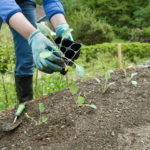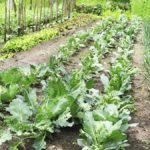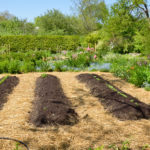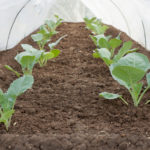The weather will direct your efforts in the vegetable garden in early autumn–September. Frost may strike even the mildest regions in early autumn. Know the average first frost date for your area. This date will allow you to plan your garden activities; you may have plenty of days to get new crops in or you may be short on growing time. Autumn brings what many gardeners refer to as “second spring”. Nearly all the cool-weather crops planted in spring can be planted again in “second spring”–autumn.
Here are some articles to help you keep growing your garden this autumn. Oh, and be sure to see the last article below–a recent post from our new site GardenChronicle.com.
 September Vegetable Garden Tips
September Vegetable Garden Tips
Cool-season vegetables can be planted in September in mild-winter regions. Plant now beets, broccoli, Brussels sprouts, carrots, cauliflower, celery, fava beans, kale, kohlrabi, leeks, both head and leaf lettuce, mustard greens, onions, parsley, peas, potatoes, radishes, rutabagas, spinach, Swiss chard, and turnips. Vegetable crops will begin to take longer to ripen in September. Give melons, limas, and tomatoes more time to ripen naturally. Eggplants are ready for harvest when they are shiny. Read more >>>
 Regional Garden Tips for September
Regional Garden Tips for September
We’ve divided the country into 4 major geographical areas: North and East and Midwest (zone 2 in the northernmost areas to zone 6 along the Atlantic coast), the South (zones 7 in the north to zone 10 in the far south), the Southwest and California (zones 7 in the coolest areas to zone 11), and the Northwest (zones 5 in the highest elevations to 8 along the coast). Here’s what you can do this month in your garden in your region. Read more>>>
 Planning and Planting the Fall Vegetable Garden
Planning and Planting the Fall Vegetable Garden
Plant the autumn vegetable garden so that the crops come to harvest on or about the average date of the first frost in fall. Crops for autumn and early winter harvest are cool-weather crops—crops that like to get their start in warm soil and air but yield best when they come to harvest when temperatures are cool. Cool-weather crops can be planted twice a year, first in early spring for harvest before the summer heat arrives and again in mid- to late summer and autumn for harvest in the cool of autumn. Some people call the autumn harvest of cool weather crops “the second season.” Read more>>>
 Extending the Season with Plastic Tunnels
Extending the Season with Plastic Tunnels
Plastic tunnels can be used to extend the vegetable growing season by 4 to 8 weeks in spring and fall. A plastic tunnel is easily made by draping plastic sheeting over a series of sturdy wire or plastic hoops to create an enclosed growing space. A plastic tunnel works much like a cold frame. The temperature inside a clear or opaque plastic tunnel can be heated by the sun 5 to 10 degrees warmer or more than the outdoor temperature during the day. The residual solar heat inside a plastic tunnel can keep plants 2 to 7 degrees warmer than the outdoor temperature at night. Read more>>>
New From Garden Chronicle
If you grow annuals, perennials, shrubs, trees, or houseplants, you’ll want to visit GardenChronicle.com. Here’s a recent post at GardenChronicle.com
 Ten Autumn Blooming Perennials for Sun or Part Sun
Ten Autumn Blooming Perennials for Sun or Part Sun
Autumn-blooming perennials can keep the garden full of color until the frost and cold weather arrives. Though comparatively few in number, autumn blooming perennials offer an abundance of blooms and in a brilliance of colors. You could easily devote an entire garden to autumn-blooming perennials. Here are ten autumn-blooming perennials that will bloom in full sun and part sun. Read more>>




















